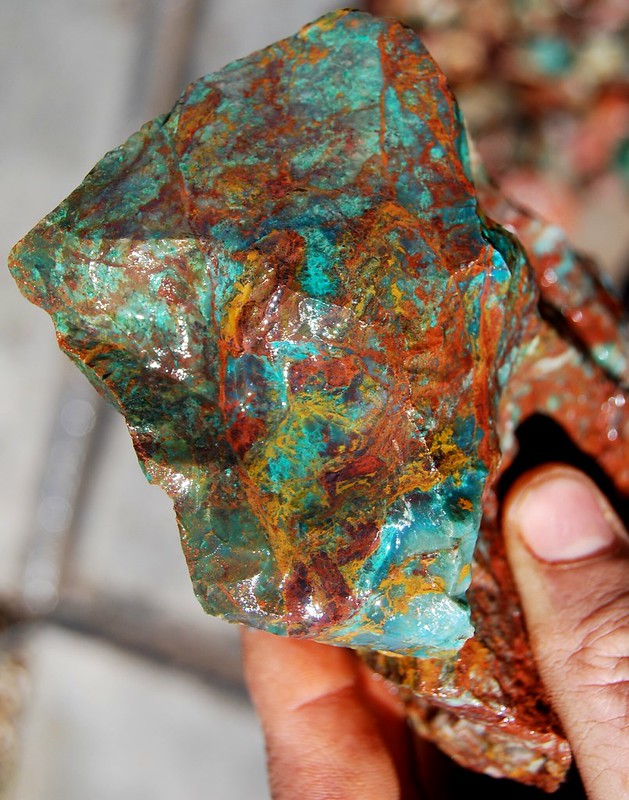What I learned was that the name "parrot wing" chrysocolla is actually a name used for silicated chrysocolla (actually chalcedony stained with copper salts) with a mix of colors resembling a parrot's wing. For example this piece I collected.
 DSC_0784[2]
DSC_0784[2] by
James Sloane, on Flickr
As far a chrysocolla the technical definition is a copper silicate, although the name has become the "catch all" for any unidentified copper ore.
Turquoise is a copper aluminum phosphate and is harder and denser that chrysocolla. Still some people cannot tell the difference including some "experts". I have material that all the tests so far (hardness, density, phosphate and acid dissolution tests) all point to turquoise and rule out chrysocolla 100%. It is hard and stable and yet one so-called "expert" at Quartzite called it "crapcolla" an da guy on the turquoise boards got all pissy and said he did not care what my chemistry tests say his supposed 40 years experience said it was chrysocolla. Chrysocolla is SOFT and cannot really be used for jewelry without stabilization. It is also much less dense than turquoise, does not contain phosphate and does not dissolve in HCl from what I have read. My stone has the density of turquoise, again is hard, tested for a high level of phosphate and dissolves in the acid like turquoise. Here is an example of the stone I gave to some friends of mine and another friend did the silver smithing (necklace, ring and earrings) for them. This WAS NOT stabilized or treated at all, which would have been impossible for chrysocolla:
 20161108_230632-1 - Copy
20161108_230632-1 - Copy by
James Sloane, on Flickr
I will be sending a sample off for more definitive testing soon.
There are also other minerals that can be confused with turquoise such as the copper mineral rosasite and variscite that is closely related. And if you do a quick search there is an article discussing the fact that most of the "turquoise" being sold on the market is actually planterite, not turquoise. In fact here is the article:
rruff.info/doclib/MinMag/Volume_62/62-1-93.pdf
"Light blue or blue-green 'turquoise' from many world-wide localities is actually planerite rather than turquoise." (page 106)
And since turquoise look-a-likes can occur with turquoise even location does not always help.
Another thing to keep in mind is that not all turquoise is blue, nor does all turquoise have veining as is commonly believed. Turquoise comes in about 70 shades of color. Here in Nevada a lot of our turquoise is green or has a greenish cast due to the high iron content. And in Persia veins in turquoise is considered a flaw and devalues the turquoise.
 Author
Topic: Difference between parrot wing, copper complex, turquoise, chrysocolla, etc. (Read 1754 times)
Author
Topic: Difference between parrot wing, copper complex, turquoise, chrysocolla, etc. (Read 1754 times)
